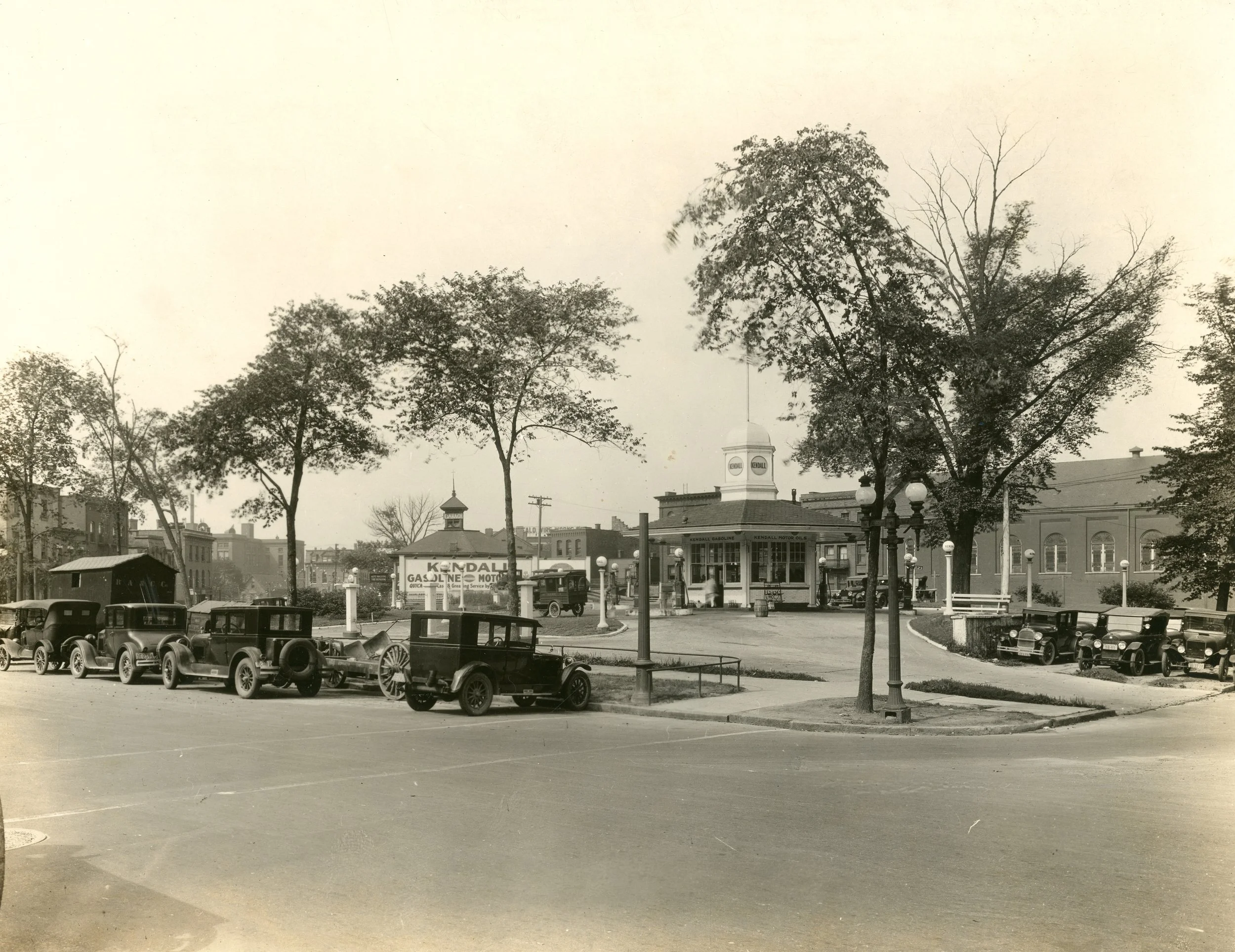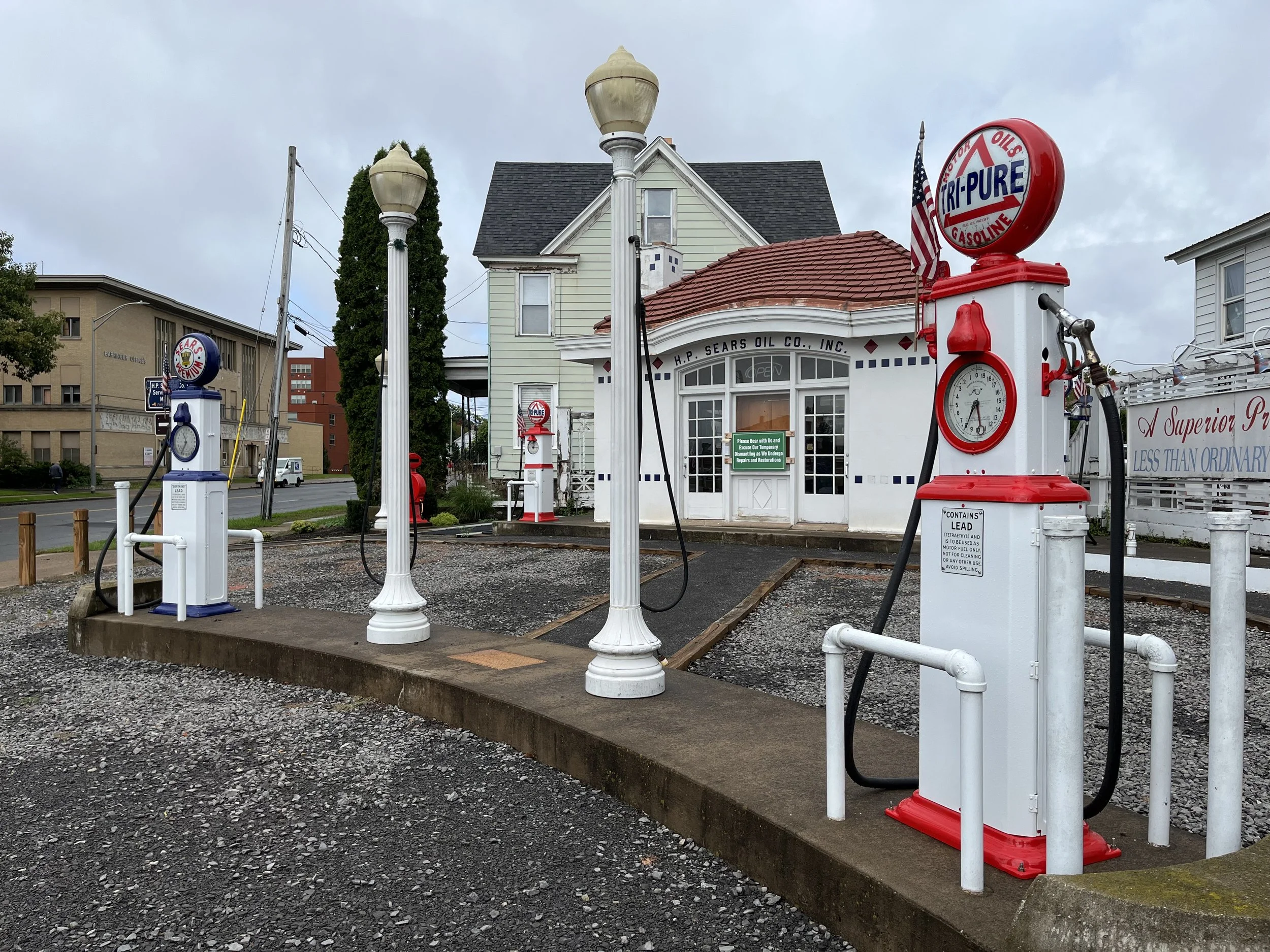Domestic
A German pharmacy served as the first refueling station in 1888. The first purpose built gas station in the US was opened around 1905. Over the years, designs have evolved into larger structures with more features and refined design ideas.
Early Station Types
The first motorists filled their tanks by hand and then more safely following the invention of gas pump after 1905. Some businesses such as grocery stores or car dealers installed pumps in the front of their businesses to attract more customers. As car ownership increased, the gas station appeared as a unique building type.
The first gas stations were basic sheds that housed the station attendant with a small office, a restroom and storage space. Eventually canopies were added over the refueling areas to shelter the car and the attendant during fueling. These became distinctive elements used to identify gas stations and their respective brands.
Photo: Buffalo History Museum
House-Type Stations
As new stations were built on prominent sites in residential neighborhoods, complaints about the stations increased. The oil industry designed stations that resembled houses in response. At the same time, programmatic elements were added such as automotive supplies, restrooms and car repair garages. These were designed in a style that matched local houses with sloped roofs and residential building materials that helped them fit in.
Photo: Buffalo History Museum
Sears Stations
In central New York State, H. P. Sears Oil Co. built stations to sell their products beginning in 1928. One station remains as a museum in Rome, New York. The station has a house-type design that provides space for the attendant, a restroom and a limited area for product display. Beside the building, an open oil change pit is designed to have the attendant stand beneath the car to change the oil without a garage or a mechanical lift.
Mimetic Stations:
Beginning in the 1920’s stations were designed to take on distinctive shapes that helped them stand out on busy highways. These mimetic designs mimic objects to attract the driver’s attention in the roadside visual chaos. The building forms would stand out, but the forms are not necessarily related to their location or to automotive travel.
The Big Duck in Flanders, New York, built in 1931 by a duck farmer to sell ducks and duck eggs, is a well known example of mimetic architecture that Robert Venturi and Denise Scott Brown cited in their book Learning from Las Vegas: The Forgotten Symbolism of Architectural Form.
Colonial Beacon stations included a lighthouse attached to the house-type station. This station in Cooperstown, New York, is nowhere near the shoreline.
Shell Station, Winston-Salem, North Carolina. Photo: Library of Congress, Prints & Photographs Division, photograph by John Margolies
This Shell station in North Carolina built in 1930 takes the idea of mimetic design for a gas station about as far as we can go.
Box-Type Stations
Modern box-type stations with flat roofs and glazed storefronts were designed beginning in the 1930’s. This approach emphasized branding for the companies. The designs were easily replicated in many locations. Large show windows displayed their automotive products on sale.
Shell Station, Kingston New York. Photo: Library of Congress, Prints & Photographs Division, photograph by John Margolies
Eliot Noyes - Mobil Oil
As oil companies designed gas stations that emphasized their brands, Mobil Oil hired Eliot Noyes in the 1960s to develop their corporate design program making it more coherent. These stations used a consistent strategy with signage as well as the circular form of the logo and the canopies.
Photo: The Henry Ford








